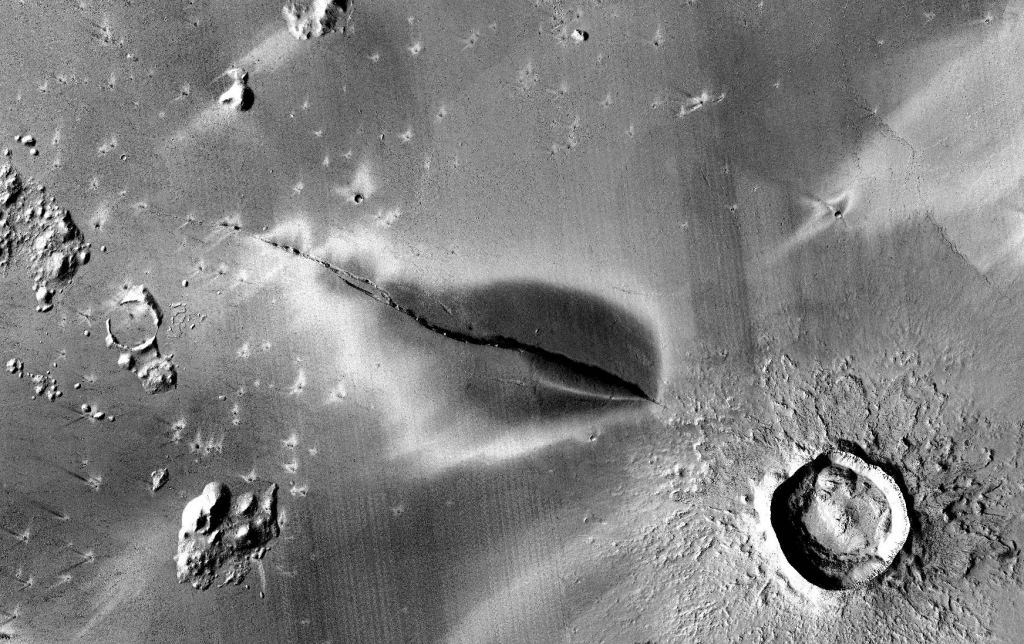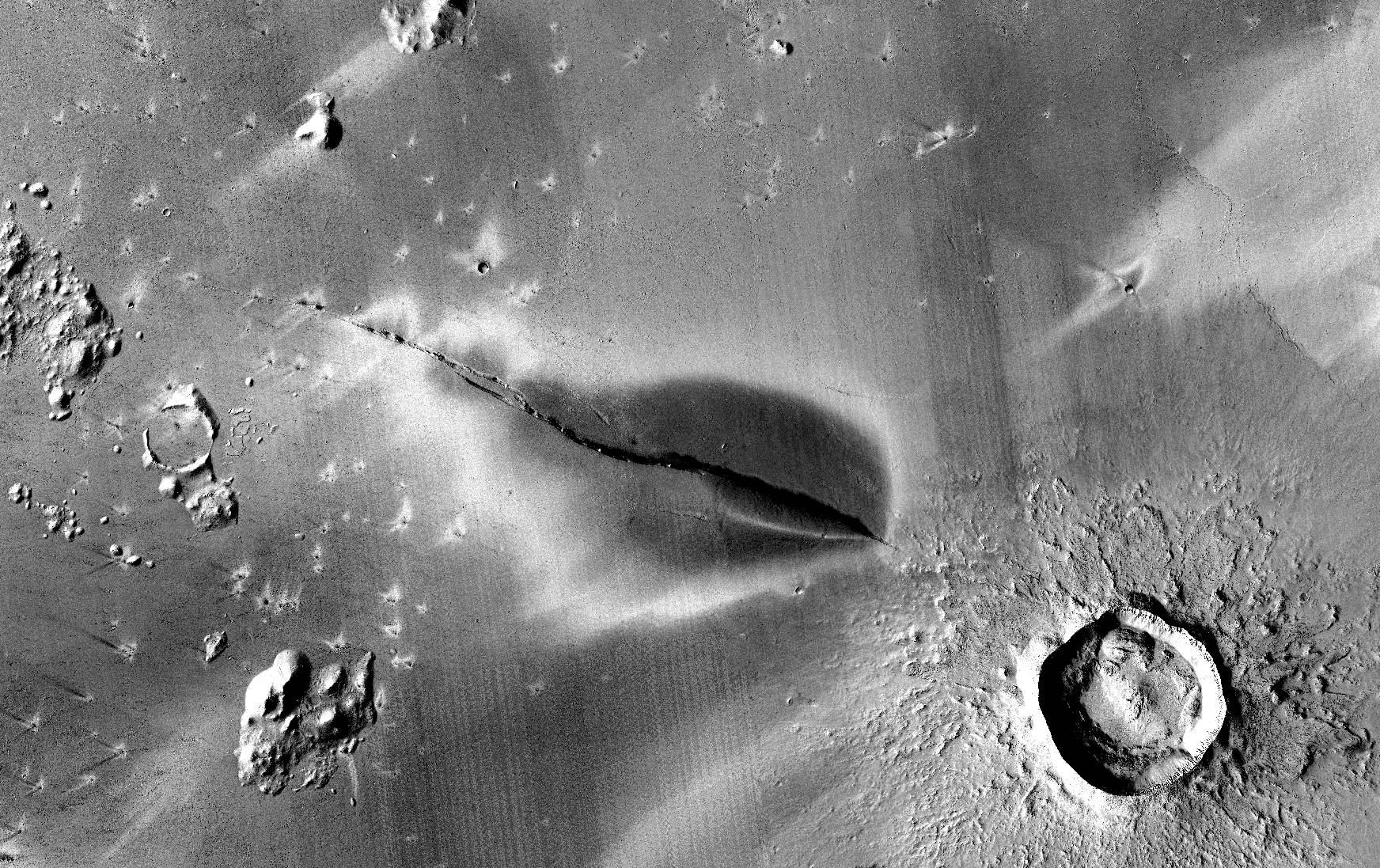Back in March, NASA’s InSight lander detected two large quakes from a geologically active region of Mars called the Cerberus Fossae. Now, using imagery from the Mars Reconnaissance Orbiter, which circles the red planet at an altitude of about 300km, researchers have discovered that the Cerberus Fossae region holds the most recent evidence of volcanic activity ever seen on Mars.
The newly observed volcanic deposit could have been created as recently as 46,000 years ago, though outer estimates suggest that, at the oldest, it might be 200,000 years old. In either case, on geological time scales, this is a very young deposit. Most of the volcanic rock elsewhere on Mars is orders of magnitude more ancient, forming during a period of heavy geological activity between 3 and 4 billion years ago. More recent volcanic eruptions occurred with regularity on Mars up to about 3 million years ago, but until now, we have never seen any evidence of volcanism that can be dated in the thousands of years. This new deposit is unique. As lead researcher David Horvath from the Planetary Science Institute explains, “if we were to compress Mars geologic history into a single day, this would have occurred in the very last second.”

The eruption that created the deposit appears to have been explosive in nature, with a pyroclastic cloud that could have reached as high as 6km. The dark layer of ash and volcanic material leftover from the explosion now covers a 13km wide region on either side of one of the large fissures from which the Cerberus Fossae takes its name.
Most volcanic rock found on Mars today is the result of lava flowing slowly across the surface. Explosive volcanism like this seems much rarer, though its rarity is not necessarily a result of it occurring less frequently. Instead, it is because explosive volcanism leaves behind thinner layers of material, so it is more easily eroded by wind and other geological activity, or hidden beneath sand and dust. In other words, the only reason we can see this new deposit at all is because it’s so young – it hasn’t yet vanished from the geological record.
When the observations from orbit are combined with the seismic data from InSight, they offer the tantalizing possibility that the Cerberus Fossae region could still see future eruptions, and that magmatic activity is still ongoing just beneath the surface there.
One speculative, but not altogether unreasonable hypothesis, suggests that this ongoing underground magma flow might have melted ice embedded in the nearby Martian subsurface, creating habitable environments for microbial life in the present day.

The researchers believe that “these environments would be analogous to locations on Earth where volcanic activity occurs in glacial environments such as Iceland, where chemotropic [bacteria that gains energy from oxidizing inorganic molecules], cryophilic [cold-loving], and thermophilic [heat-loving] bacteria thrive.”
For now, we have no way of testing this theory, though InSight will continue to listen for further seismic activity from it’s position about 1,600km away. In the ongoing search for microbial extra-terrestrial life, however, the Cerberus Fossae may be a promising location for future missions to explore.
The researchers published their findings in Icarus. You can read more about it here:
“Volcanoes on Mars Could Be Active, Raise Possibility of Recent Habitable Conditions.” Planetary Science Institute.
David G. Horvath, Pranabendu Moitra, Christopher W. Hamilton, Robert A. Craddock, Jeffrey C. Andrews-Hanna. “Evidence for geologically recent explosive volcanism in Elysium Planitia, Mars.” Icarus.

